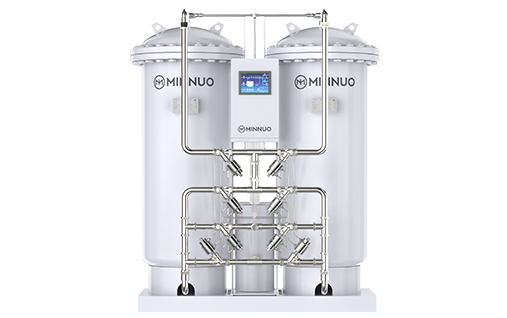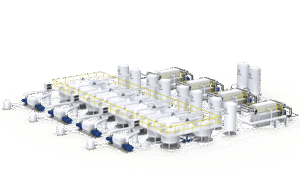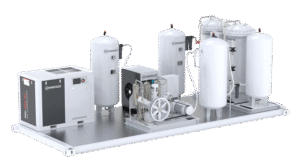In today’s industrial landscape, the need for a safe, reliable, and cost-effective oxygen supply has never been greater. Whether you’re operating a hospital, steel plant, fish farm, or glass factory, oxygen is a critical component of your daily operations. One of the most popular technologies to meet this demand is the PSA Oxygen Plant — a fully automated on-site solution that produces oxygen from ambient air.
1. What Is a PSA Oxygen Plant?
A PSA (Pressure Swing Adsorption) Oxygen Plant is a self-contained system that generates high-purity oxygen (typically 90%–95%) from atmospheric air. It does this using a pair of adsorption vessels filled with zeolite molecular sieves, which selectively trap nitrogen while allowing oxygen to pass through.
The system alternates between pressurization and depressurization cycles, continuously producing oxygen without the need for cryogenic separation or external gas delivery.
2. How Does It Work?
Here’s a simplified step-by-step process:
Air Intake: The system draws in ambient air using a compressor.
Filtration: Air is filtered to remove dust, oil, and moisture.
Adsorption: Compressed air enters the first tower filled with zeolite. Nitrogen is adsorbed, and oxygen flows out.
Switching: When the first tower is saturated, the system switches to the second tower.
Desorption: The first tower is depressurized, releasing nitrogen to the atmosphere and regenerating the zeolite.
Repeat: The cycle alternates continuously for uninterrupted oxygen production.
3. Advantages of PSA Oxygen Plants
PSA technology offers a wide range of benefits, making it a top choice for many industries:
Cost Efficiency: No recurring delivery or refill costs; low operating cost per Nm³.
Continuous Supply: Generates oxygen 24/7, based on your real-time demand.
On-Site Production: No need to store or transport gas cylinders.
High Purity: 90–95% oxygen purity meets the needs of most industrial and medical applications.
Fully Automated: Minimal manual intervention required; touch screen PLC control.
Compact & Modular: Easy to install in confined or remote locations.
4. Key Applications Across Industries
PSA Oxygen Plants are widely adopted in sectors including:
Healthcare: Hospitals and clinics for ICU oxygen supply.
Steel & Metallurgy: Enhancing combustion efficiency in furnaces.
Aquaculture: Enriching oxygen in water tanks to improve fish health.
Glass & Ceramics: High-purity oxygen for stable high-temperature processing.
Wastewater Treatment: Boosting efficiency in aerobic biological processes.
Ozone Generation: Supplying oxygen to ozone generators for water disinfection.
5. Choosing the Right System for Your Needs
When selecting a PSA Oxygen Plant, consider the following:
Daily oxygen demand (Nm³/h)
Desired purity levels
Power availability and consumption
Installation space and environmental conditions
Control requirements (PLC, remote monitoring)
Reputable manufacturers will provide a customized solution based on your industry and budget.
6. Final Thoughts
A PSA Oxygen Plant is not just a product — it’s an investment in operational independence, safety, and cost control. With proven technology, robust performance, and low lifetime cost, PSA systems are the preferred choice for modern facilities worldwide.
If you’re considering an upgrade to your oxygen supply system, a PSA plant could offer the reliability and savings you’ve been looking for.




